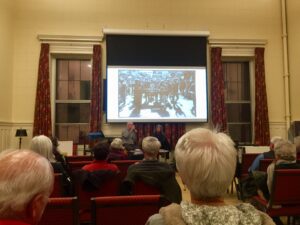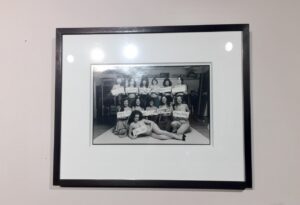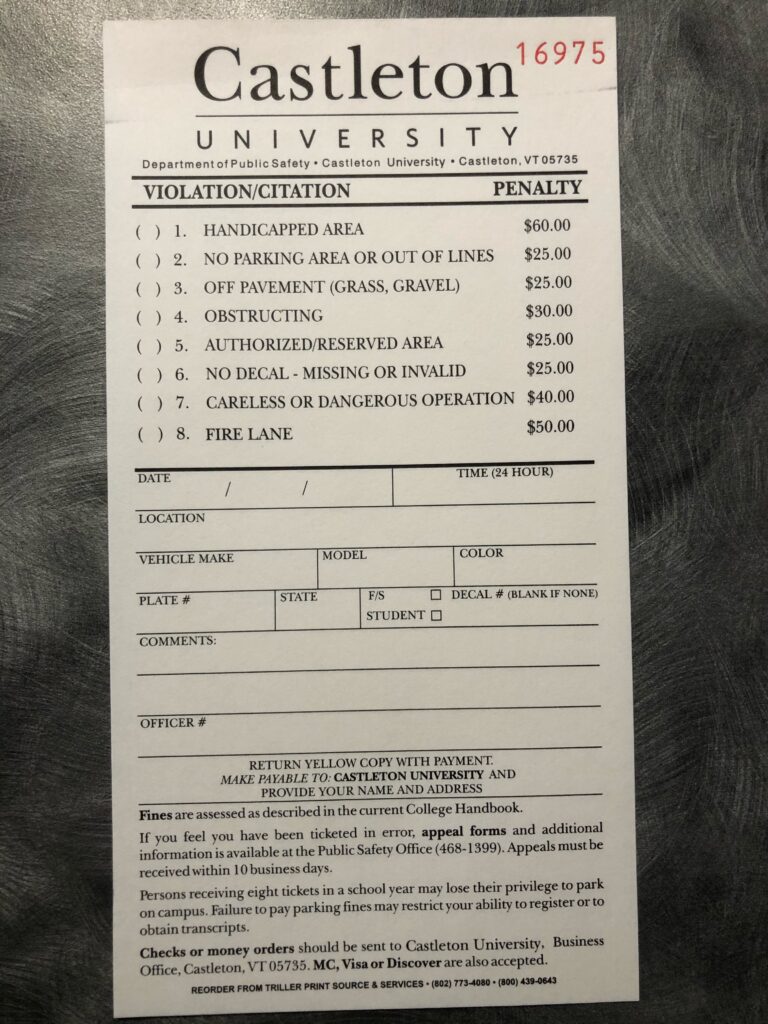Famed photographer shows work in Rutland


Dona Ann McAdams, an acclaimed photographer and social justice activist, came to the Rutland Free Library last Wednesday to discuss a collection of her work as part of a Vermont Humanities Council First Wednesday event.
The talk featured McAdams’ own personal stories behind a collection of photographs spanning 45 years of her career. The photos were handpicked by McAdams alongside artistic curator and long-time friend, John Killacky, who led Wednesday’s discussion.
The entire collection can be seen on display at the Castleton Bank Gallery until Jan. 4.
“It’s really been a wonderful opportunity to look back at Dona’s career,” said Killacky. “For many in New York, she’s well known. But here in Vermont she is one of the best kept secrets.”
McAdams is most known for her portraits of performers, as well as her documentary-like photos, which chronical everything from mundane moments to historically controversial acts of protest.
“She has documented incredible history from the streets. Wherever people have mobilized or acted, she seems to have been on the spot,” said Bill DeForest, a professor of graphic design at Castleton University.
Taking candid photos on the street is one of the things McAdams is best at, whether it’s in the middle of a protest or hanging out at a stable.
When asked if she asks permission before taking photos, the answer was a definitive no.
“I don’t sneak around and I don’t use a long lens, but I’m still not asking permission,” McAdams said. “Because I’m a woman and I’m small people really don’t pay attention to me anyway, which is an advantage and maybe a disadvantage sometimes.”
The collection at the Bank Gallery has a number of themes beyond candid shots that seem to demonstrate different chapters both in history and in her life.
“In the very beginning, you can see how Dona was a street photographer, and how that same eye, that same ethos remains throughout all the different bodies of work,” Killacky said.
In one corner are photos of crowds filled with angry faces. A series of protests for a variety of causes that McAdams attended and captured.
Nearby is a photo of several topless women holding signs bearing either the words “Porn Star” or “Feminist.”
These were two groups of women who came together to make a show exploring feminism, and they wanted McAdams to take a photo.
“So I came with these signs and markers,” said McAdams. “I said, ‘Why don’t you all make a sign of who you are, feminist or porn star, and they all did. I said ‘Okay let’s all line up’ and then I said, ‘Everybody take your shirts off.
“We took the photographs and everyone swapped signs and moved all around. It was really a fun, joyous coming together,” she said. “They didn’t really know each other as well as they did after this photograph was taken. There’s nothing like using some crayons and not having a shirt on to get to know your partner a little.”
McAdams has a history of documenting important events of protest, whether that importance was obvious to others at the time or not.
Along one wall is a series of portraits of performers, many of which were presenting fairly controversial acts at the time.
“These people are not just acting, but the very act of performing is activism under her lens. She really points out that it may not be political theater, but it’s the politics of being a human being and demanding to be respected as an individual,” said DeForest.
On another wall hangs a picture of an older West Virginian woman milking her cow.
And among pictures you’d expect to see in U.S. history museums are pictures of Vermonters, goats and oxen.
McAdams moved back from New York to her home state of Vermont several years ago, something that’s plain to see walking through the gallery.
More than a historical presentation, McAdams work is a diary of her spontaneous interests and a slideshow of the relationships she formed through her art.
There’s a picture of her husband, a picture of goat-herding nuns, pictures of politicians and other artists and a series of pictures of horses she still remembers the names of.
More than a few of the people seen in this collection are still a part of her life today.
“I love that she’s my friend. I love her as an artist. How our lives have overlapped for four decades is really profound,” said Killacky. “The shared politic, the shared aesthetic, the shared losses, the shared community … and I love her husband too. It’s really great.”







